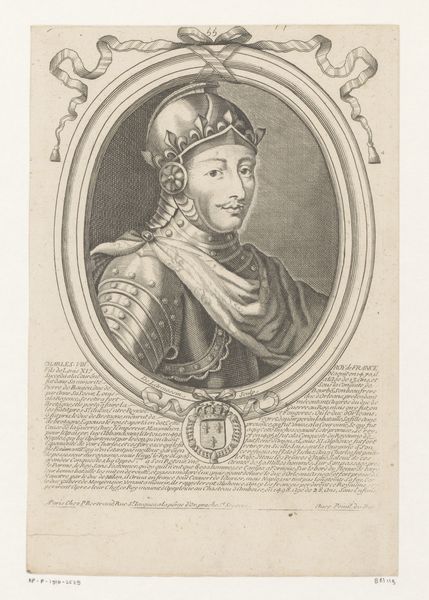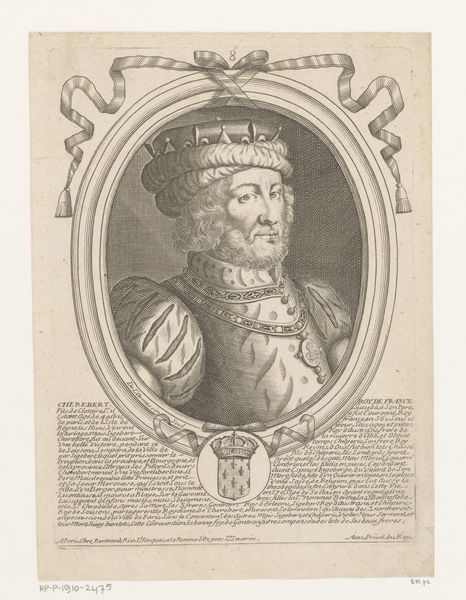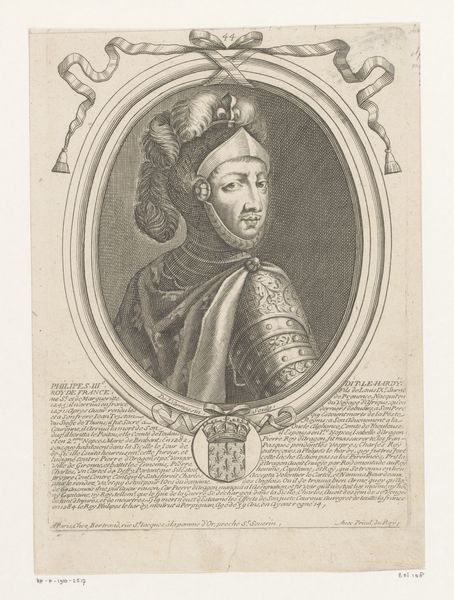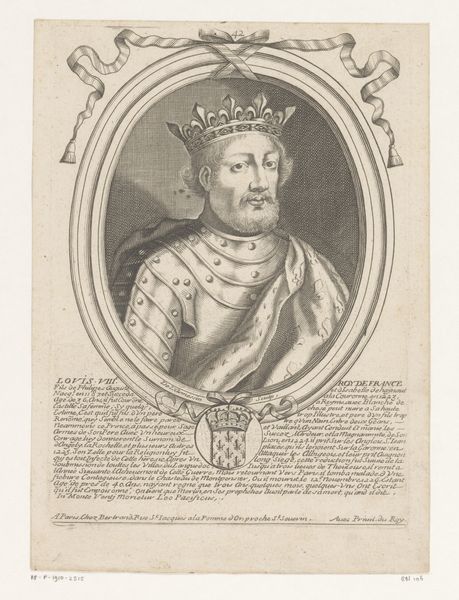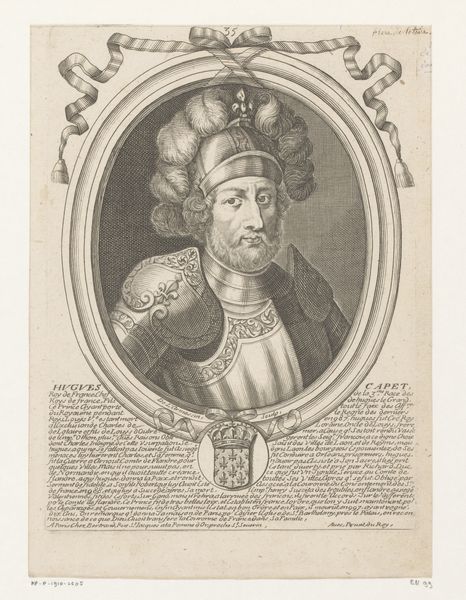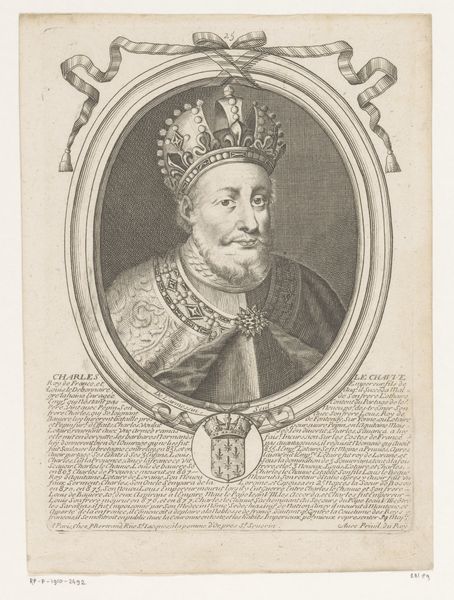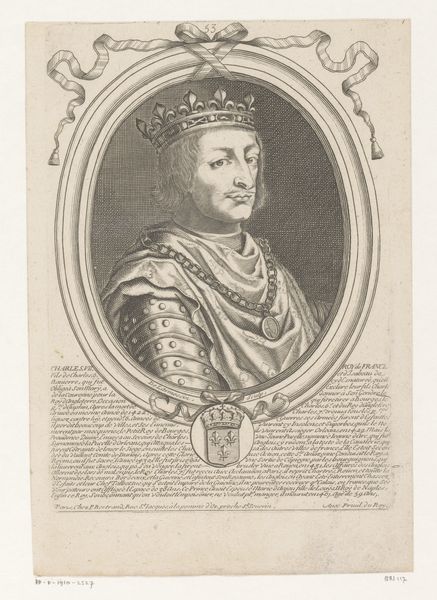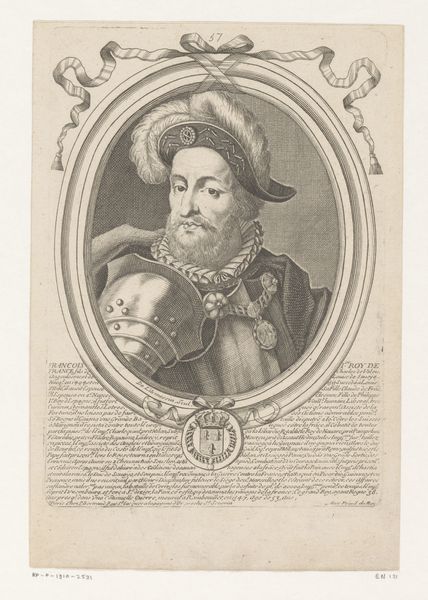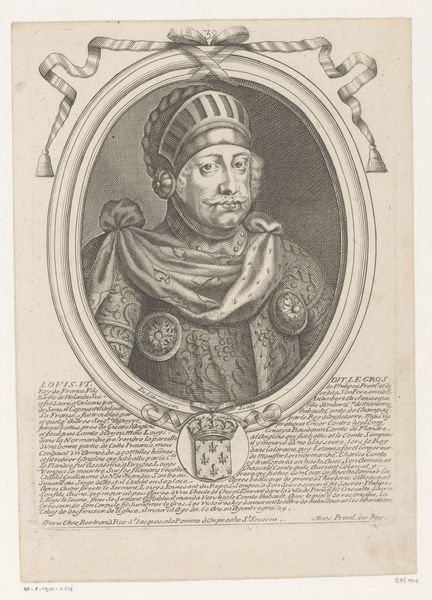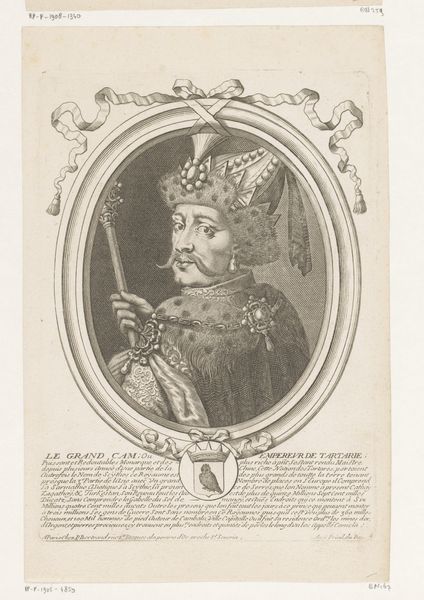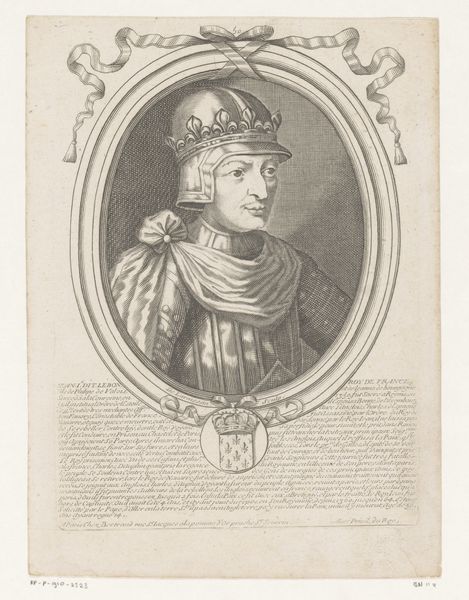
metal, engraving
#
portrait
#
baroque
#
metal
#
old engraving style
#
limited contrast and shading
#
portrait drawing
#
history-painting
#
tonal art
#
remaining negative space
#
engraving
Dimensions: height 234 mm, width 165 mm
Copyright: Rijks Museum: Open Domain
Editor: This is a metal engraving, “Portret van Filips II, koning van Frankrijk,” or “Portrait of Philip II, King of France,” created sometime between 1642 and 1678 by Nicolas de Larmessin the First. It's currently held at the Rijksmuseum. It feels like it was intended to portray King Philip as a powerful leader, but I am struggling to connect to him. What are your thoughts on this image? Curator: It's interesting that you say that. I see this work through the lens of power and its representation. How did the artist try to shape Philip's public image? The details of his armor, for example, are carefully rendered, aren't they? What does that armor communicate, especially in the context of 17th-century France? Editor: I see what you mean! The armor could be a symbol of his authority, and maybe even legitimacy. But why an engraving? Why not a painting? Curator: Precisely. Engravings allowed for wider dissemination. This wasn’t just about individual portraiture, it was about manufacturing and circulating an image of the monarchy. The text below, though hard to read, serves to amplify the King’s power. Where and how were these engravings circulated, do you think, and who had access to them? That tells us a lot about its social purpose. Editor: That’s a good point, I bet prints were more accessible than oil paintings, especially portraits of royalty! So it’s like an early form of mass media in a way. Curator: Exactly! Think about who *controlled* the printing and distribution. Understanding that network reveals the social and political functions of this portrait. And helps us understand its place within the grand theatre of power. Editor: That makes me think about how images are "spun" today, even historical images, in modern political contexts. That definitely shifts how I view it. Thanks! Curator: My pleasure. Thinking about these works through the institutions and power structures really changes how we engage with the artwork.
Comments
No comments
Be the first to comment and join the conversation on the ultimate creative platform.
